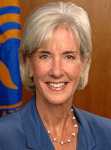Have political types trying to look cool unleashed a monster?
Your mind will truly be blown (mine was, and I see a lot of these videos) by the most ‘un-government-like’ firestorm of innovation you’ve ever heard of.
These folks seem to have opened Pandora’s box.
Here’s the press release on the Community Health Data Initiative from the HHS:
Putting Data and Innovation to Work to Help Communities and Consumers Improve Health
HHS Secretary Kathleen Sebelius and Institute of Medicine President Harvey Fineberg today launched a national initiative to share a wealth of new community health data that will drive innovation and lead to the creation of new applications and tools to improve the health of Americans.
To help citizens, clinicians and local leaders use data to improve health and value of health care, the Community Health Data Initiative (CHDI) is turning to Web application developers, mobile phone applications, social media, and other cutting-edge information technologies to “put our public health data to work.”
“Our national health data constitute a precious resource that we are paying billions to assemble, but then too often wasting,” Secretary Sebelius said.
“When information sits on the shelves of government offices, it is underperforming. We need to bring these data alive. If made easily accessible by the public, our data can help raise awareness of health status and trigger efforts to improve it.”
Kathleen Sebelius,President, Institute of Medicine
The data can help our communities determine where action is most needed and what approaches might be most helpful.
As a nation, we can and should harness the exploding creativity in our information technology and media sectors to help us get the most public benefit out of our data investments.”
“In every science-based endeavor, data are the key to effective action,” said Dr. Fineberg. “We need to make more creative and vigorous use of the data we generate now, and we need to create a demand-and-use cycle that will bring about even better health information in the future.”
The Initiative was announced at a Community Health Data Forum on June 2 at the National Academy of Sciences’ Institute of Medicine (IOM).
Federal and community leaders were joined by developers and technology pioneers who demonstrated 16 innovative applications that make use of publicly available health data.
Most of the sample applications have been developed or refined in the three months since HHS and IOM hosted a meeting on March 11 to explore the feasibility of an effort along the lines of the CHDI.
At the heart of the Initiative, increasing amounts of federally generated community health data will be made publicly available, in easily accessible and useful formats.
Secretary Sebelius announced that by the end of 2010, a new HHS Health Indicators Warehouse will be deployed online, providing currently available and new HHS data on national, state, regional, and county health performance – on indicators such as rates of smoking, obesity, diabetes, access to healthy food, utilization of health care services, etc. – in an easy-to-use “one stop data shop.”
providing currently available and new HHS data on national, state, regional, and county health performance – on indicators such as rates of smoking, obesity, diabetes, access to healthy food, utilization of health care services, etc. – in an easy-to-use “one stop data shop.”
The Warehouse will also include information on proven ways to improve performance on particular indicators.
Users will be able to explore all of this data on the Warehouse Web site, download any and all of it for free, and integrate it easily into their own Web sites and applications.
The Initiative envisions an expanding array of applications being built using HHS’ data, as well as data supplied by other sources.
Community leaders, consumers, employers, providers, and others can choose among independently developed applications to help in health assessment, planning and action.
The CHDI does not endorse particular applications, but rather enables their independent development through easier access to expanded, free data.
Communities, professionals and consumers can then choose the applications they find most useful.
An initial sampling of applications was demonstrated at the Forum today, providing an intriguing glimpse into the kinds of creative innovations the Initiative seeks to spur.
The demonstrations included Web tools that allow citizens to easily understand health performance in one county versus another, dashboards that allow civic leaders to get a detailed understanding of their community’s health status and how they might improve it, an online game that enables players to learn local health status facts, enhanced Web search that integrates hospital performance data into hospital search results, and mobile phone-based tools that put exciting new health information at consumers’ fingertips.
To learn more about the Community Health Data Initiative, please visit this website


